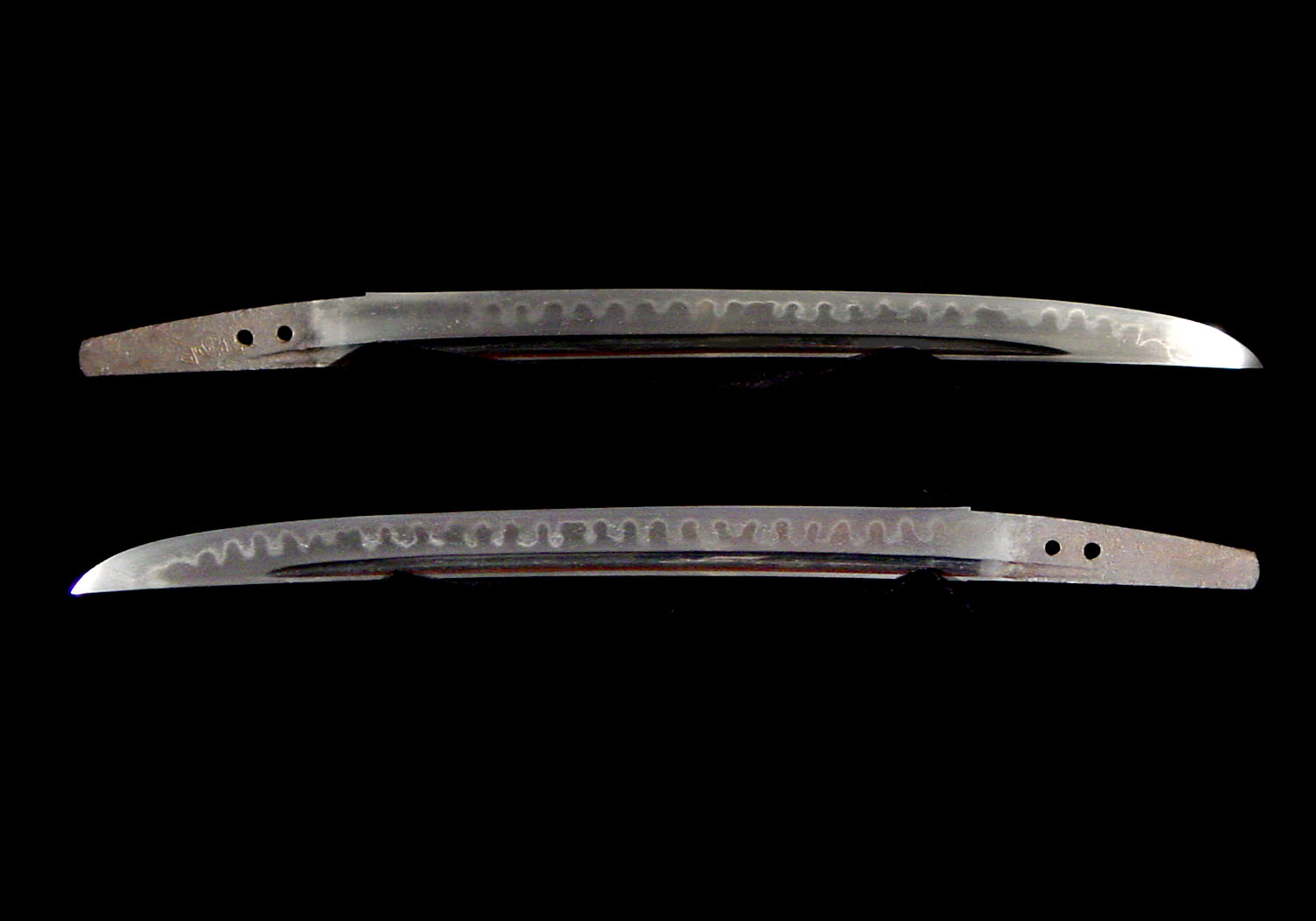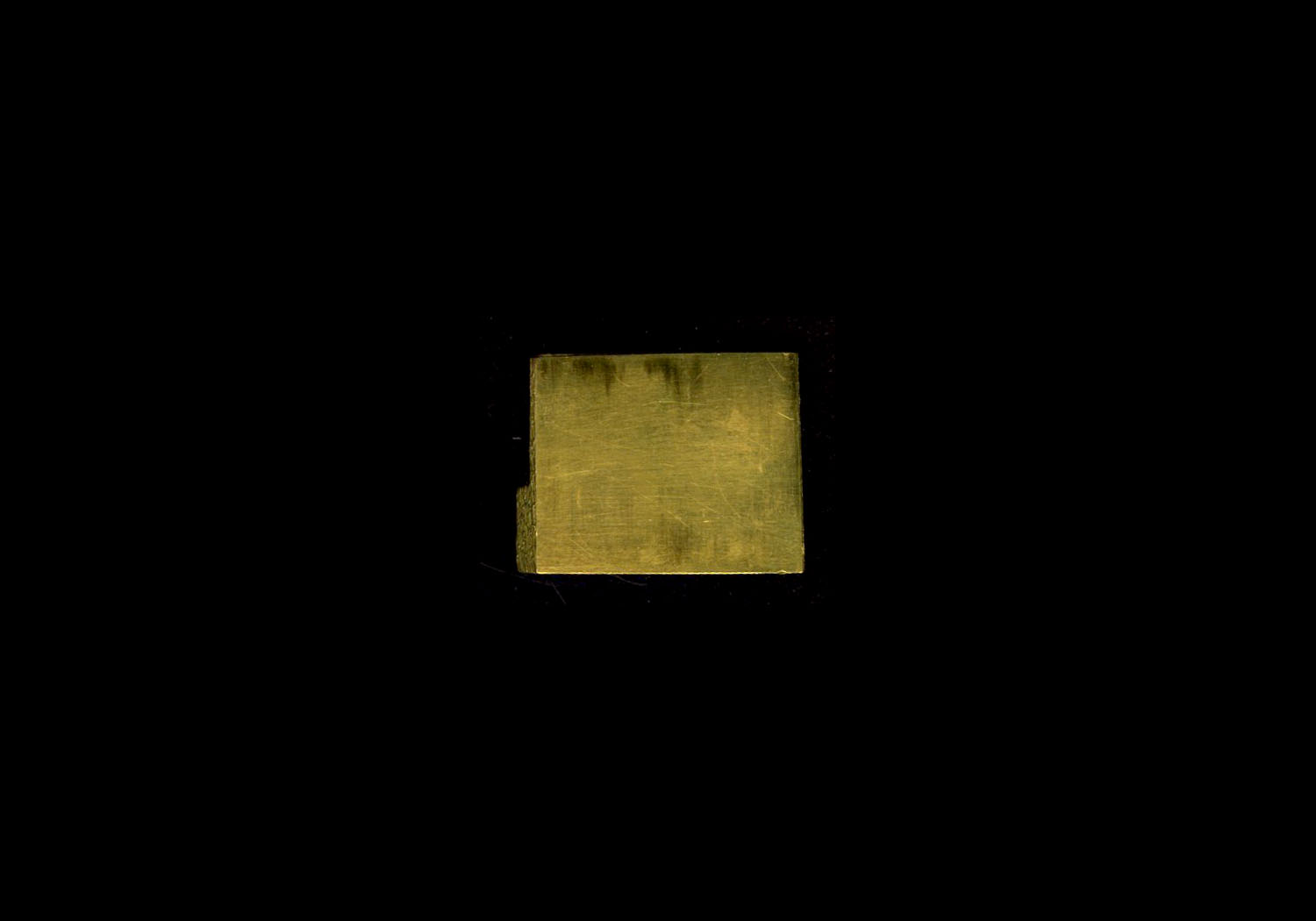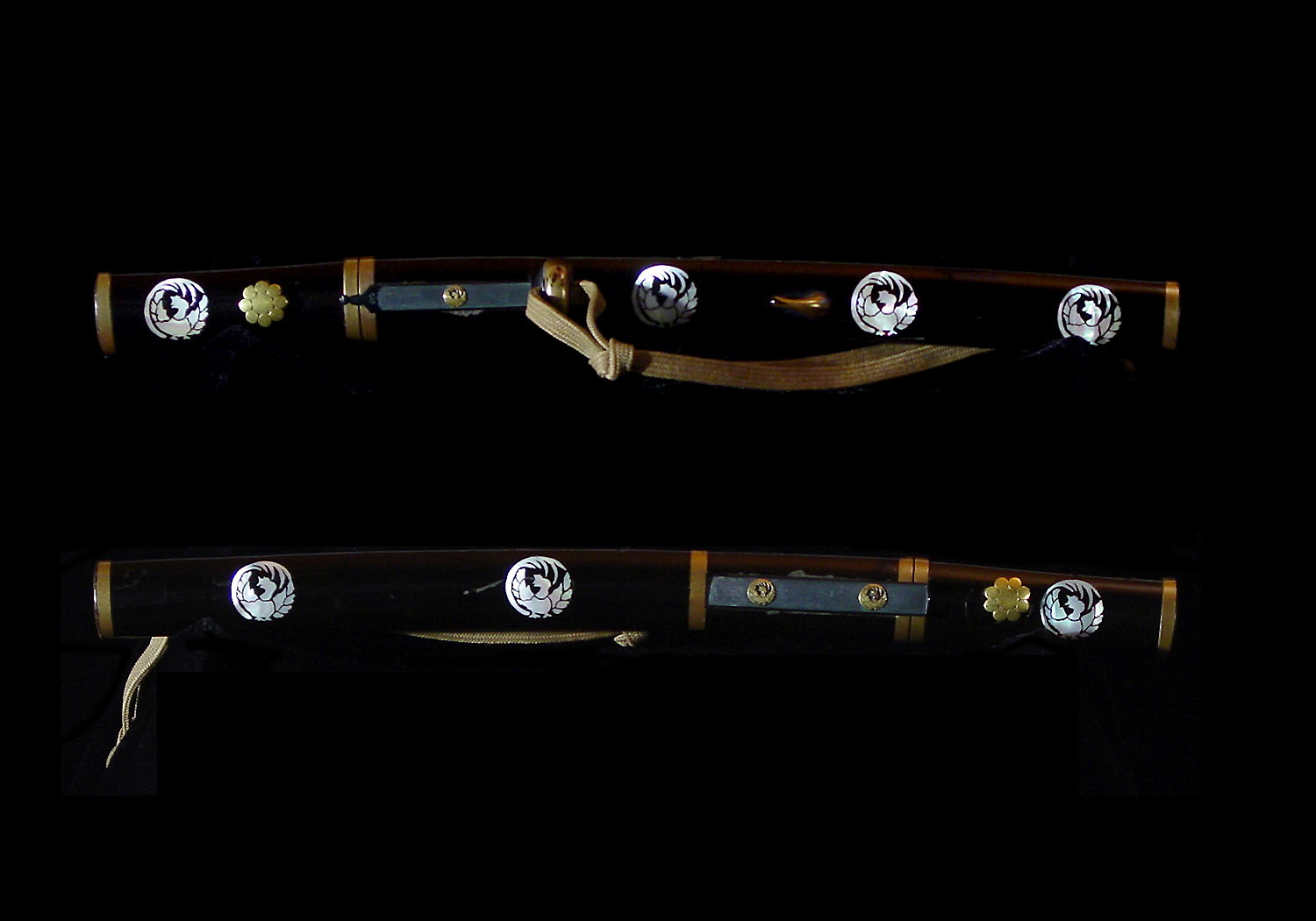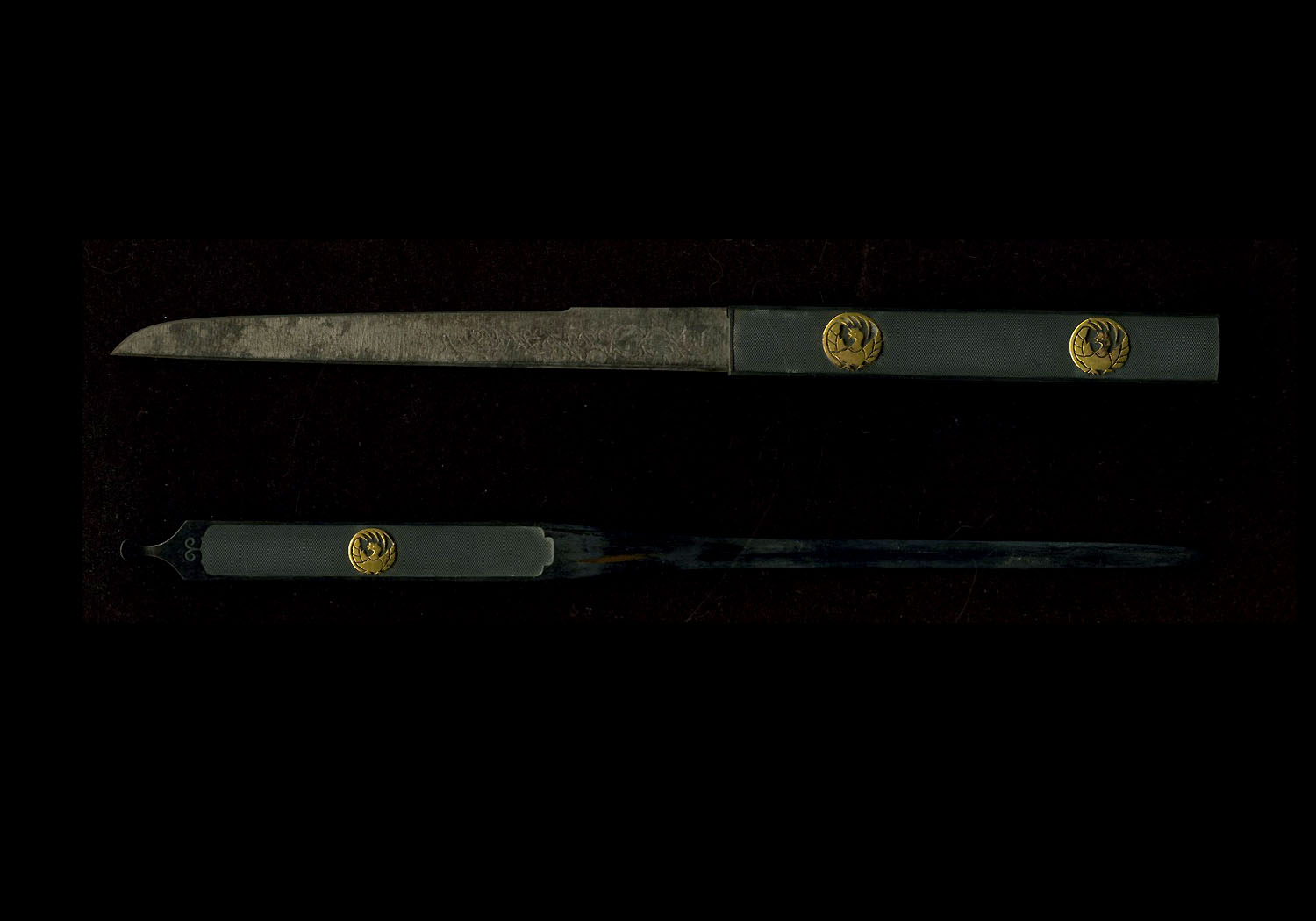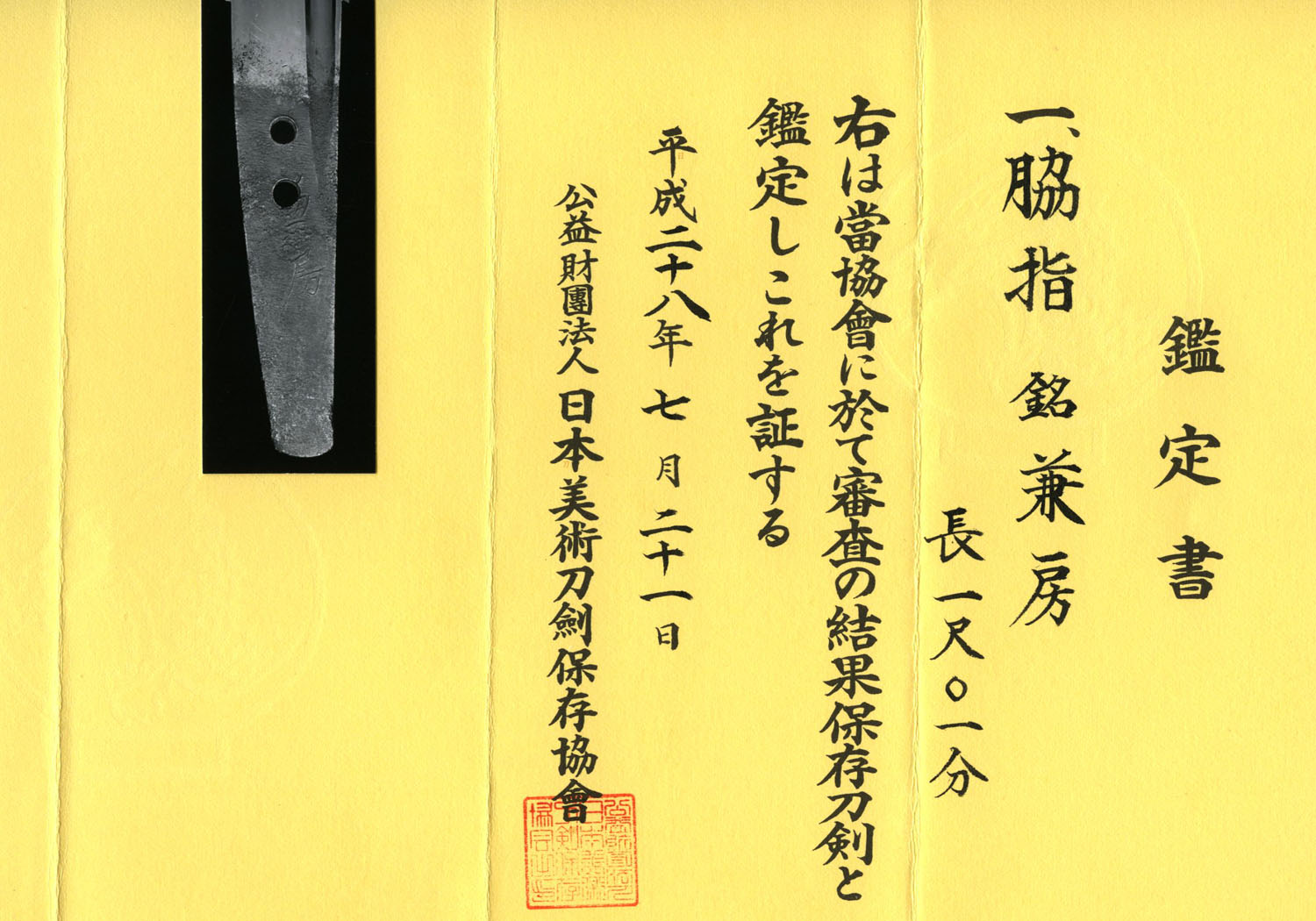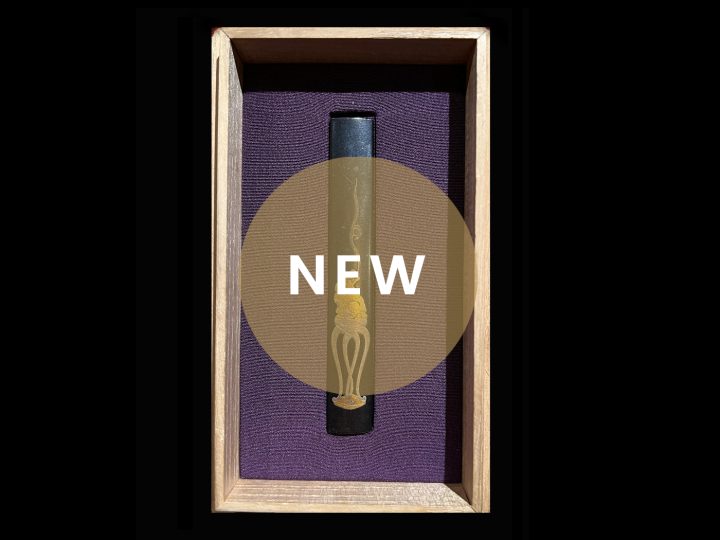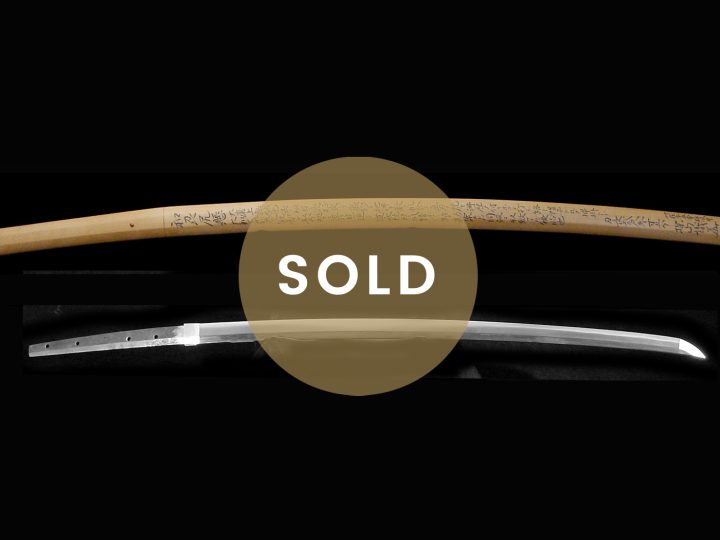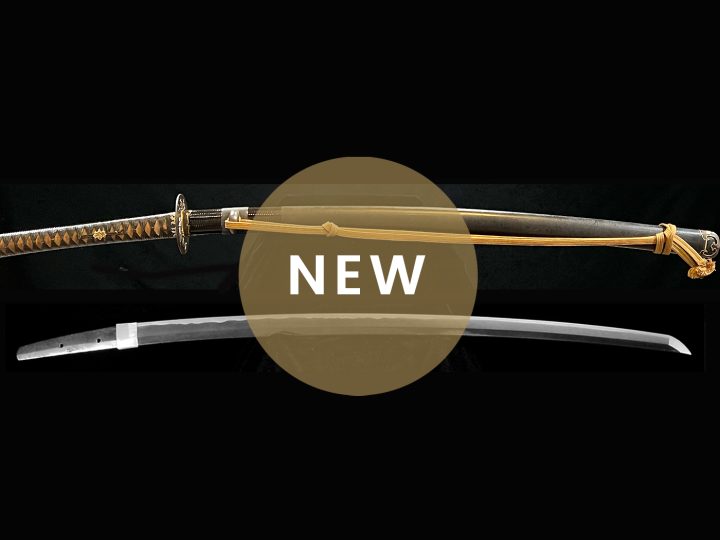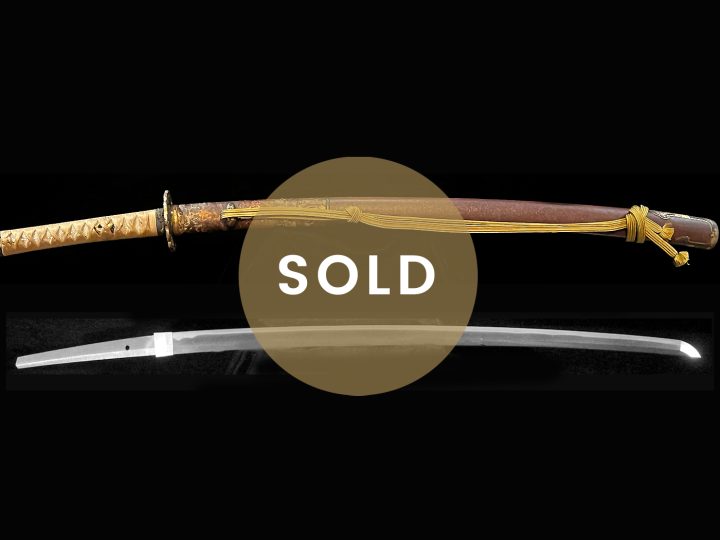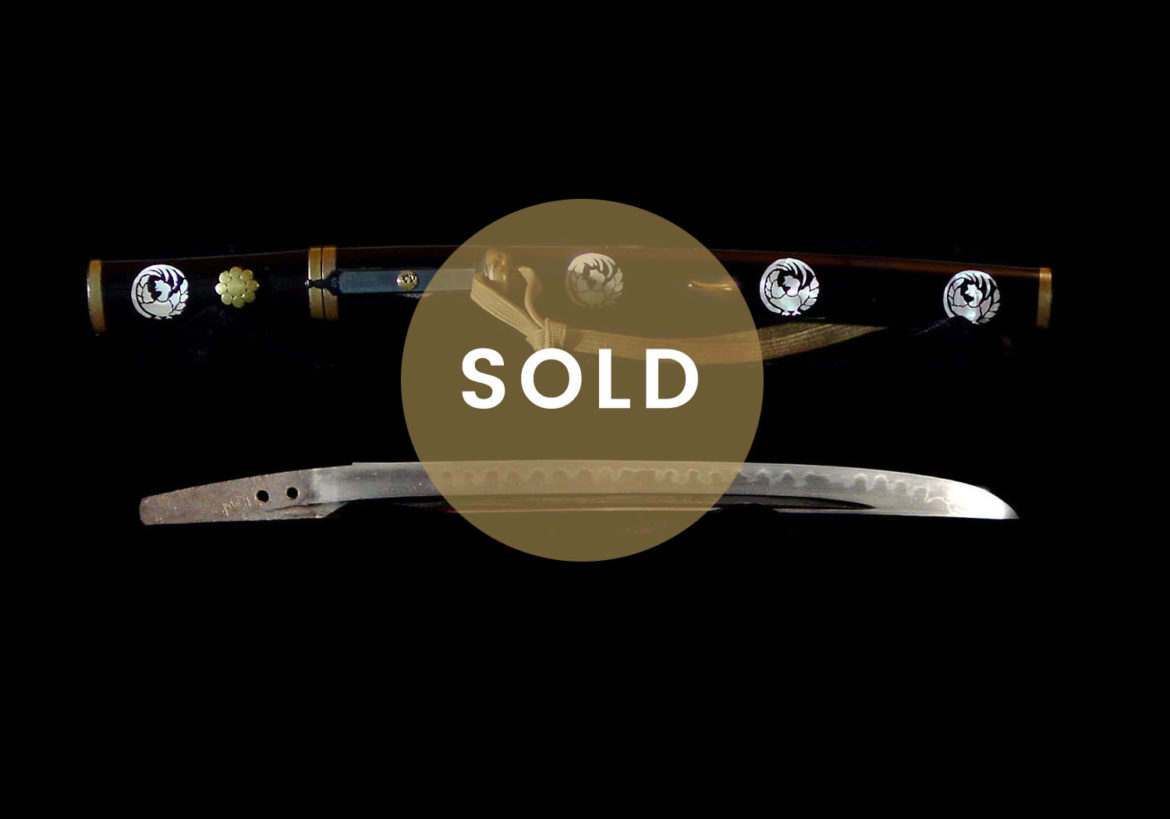
This is a kotô ko-wakizashi by the Mino smith Kanefusa. There were several generations of kotô smiths by this name who worked in Mino during the Muromachi Era from about 1441 to 1596. It is very difficult to distinguish between the various smiths by this name. They all worked in a very similar style.
This ko-wakizashi is a very nice one that has a nagasa of 12 1/16 inches or 30.6 cm. It could also be classified as an o-tantô because of its short length. The moto-haba is 1.04 inches or 2.64 cm and the saki-haba is 0.84 inches or 2.13 cm. The kasane is thin as it should be from this time period and measures 0.23 inches or 0.59 cm. The sori is shallow measuring 0.22 inches or 0.55 cm.
The hamon is the typical gumone-midare with some nioi utsuri. This hamon has a unique appearance that is sometimes called hako-midare (box midare) or uma-no-ha midare (horse tooth midare). More often than not, it is simply called Kanefusa midare. The hada is a combination of mokume mixed with some itame. The nakago is ubu with two mekugi-ana and is signed Kanefusa (兼房). The blade is in good polish and a new shirasaya. There are a few small openings in the laminations as one would expect with a blade of this age, but they do not detract from its beauty. It comes with NBTHK Hozon papers attesting to its quality and the validity of the signature.
This blade is accompanied by a nice set of aikuchi koshirae that is lacquered black with family mons inlaid in mother of pearl. There are a few old losses to the lacquer. The menuki are gold in the form of the Hosokawa family mon. There is also a very nice quality kozuka and kogai of shakudo nanako with a gold family mon matching the one inlaid into the saya and tsuka (see photos above).
All in all, this is a very nice package of a beautiful kotô blade in fine koshirae that would enhance any collection.
PRICE:SOLD



